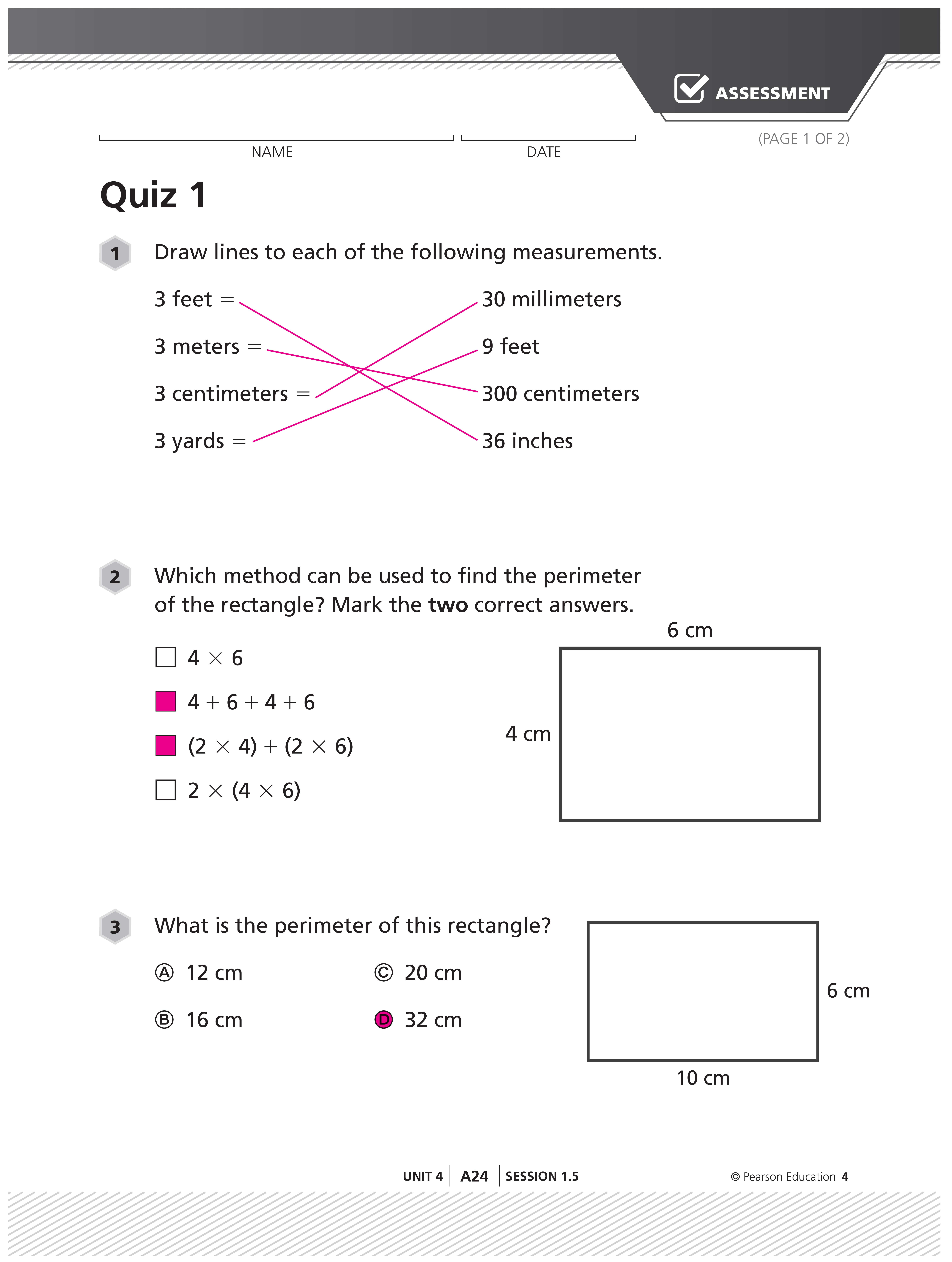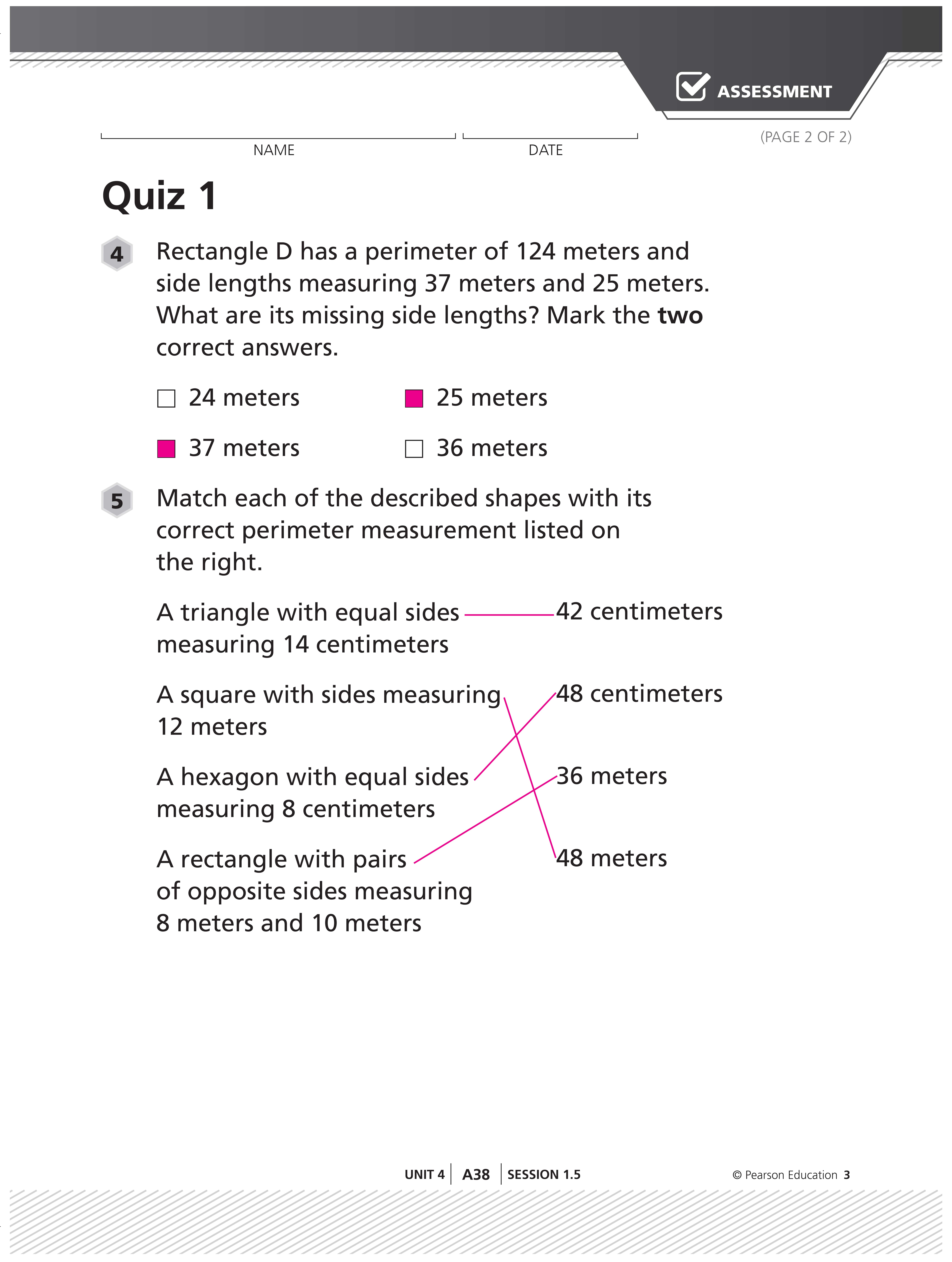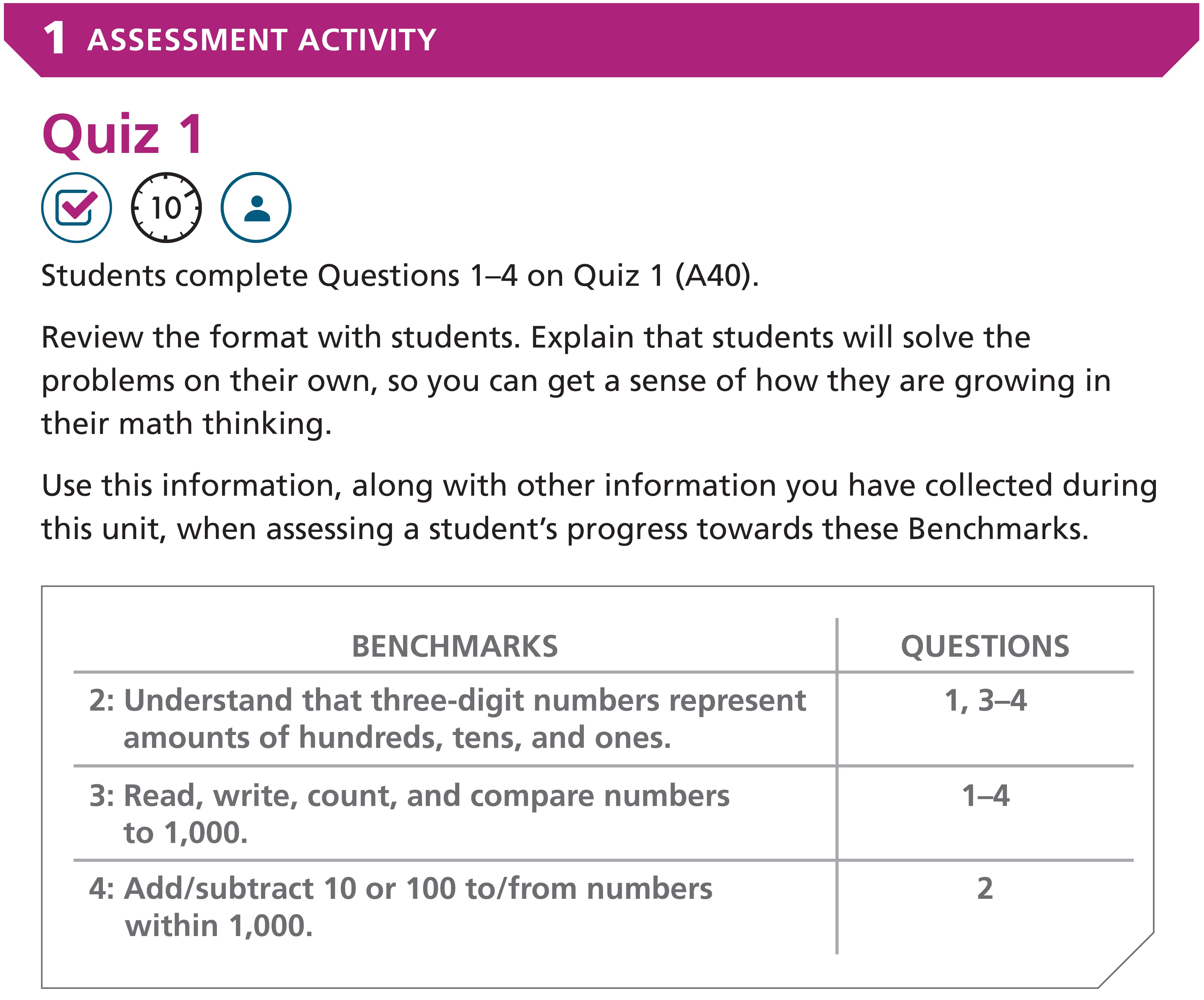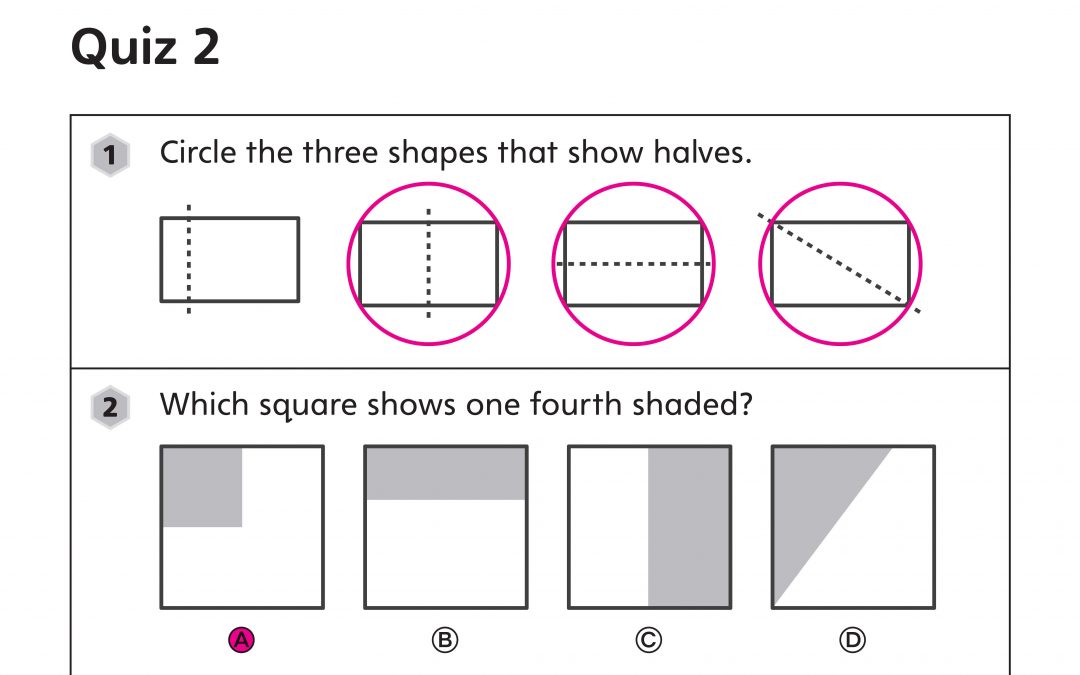Question: The Quizzes in Investigations 3 are new to us. We are used to assessing the benchmarks with the Meeting/Partially Meeting/Not Meeting system outlined in the Assessment Teacher Notes. Can you help us get a better sense of how to use the Quizzes as they relate to the Unit’s benchmarks?
Answer: Quizzes are included in grades 1-5 of Investigations 3, to give students experience with next-generation test formats, such as:
- multiple choice

4U4, A24 (page 1 of 2 of Quiz 1)
- fill-in-the-blank
- questions with more than one right answer
- questions that ask which answers are not correct
- matching questions
- questions that ask students to identify the correct answer by drawing a [circle] around it)
Given that some of these problem formats will likely be new/unfamiliar to students, teachers tell us a short discussion about the problem type is a worthwhile use of time.
Quizzes are also an additional way to monitor students’ progress. Appearing approximately every 8–10 sessions, Quizzes help teachers gather information to be “used in conjunction with the other written assessments, portfolio opportunities, and student observations to formulate a comprehensive view of students’ progress toward the Benchmarks.” (Implementing Investigations at Grade [1], p. 49)

3U4, A23 (page 2 of 2 of Quiz 1)
Most Quiz questions assess unit benchmarks that are also assessed in other ways (e.g. by an Assessment Checklist and/or an embedded assessment). For example, all 5 questions on Quiz 1 in 3U4 are about perimeter (Benchmark 1), and there is also an Assessment Checklist for that benchmark. Together, both assessments provide information about a student’s progress towards understanding perimeter. There are limited instances where a unit Benchmark is only assessed via a Quiz. This is because Quizzes offer an efficient way to assess narrower/skill-based ideas like telling time and rounding numbers.
When analyzing completed Quizzes, it may be tempting to give a percent grade based on the number of correct responses. However, quizzes are intentionally short and are not necessarily all focused on the same Benchmark. For example, Quiz 1 in 2U5 provides additional information about three of the unit’s benchmarks. Therefore, 75% would not aptly describe a student’s progress towards a particular Benchmark.

2U5, p. 129
Rather, teachers must use their judgement to balance their knowledge of the student with the information gathered via a Quiz, the daily “Observing Students at Work” sections, their written work, the Assessment Checklists, and the embedded assessments. We encourage teachers to look at both incorrect and correct responses, and think about how that information matches up with other forms of data they have collected about students’ progress towards the Benchmark. Teachers who regularly use the Meets/Partially Meets/Does Not Meet the Benchmark criteria should be able to use the evidence they have collected to select one of these criteria when considering a student’s progress. Conversations about how to do this might make a productive grade level/band/school discussion.
We are excited to have a space that offers us the opportunity to answer common questions from the field. Have questions you’d like to see answered? Email us.
- Announcing a New Forum for Equity in Elementary Mathematics - September 13, 2023
- Creating an Equitable Math Learning Community: Getting Started in Unit 1 - August 22, 2022
- A Framework for Reflecting about Equity in the Investigations Mathematics Classroom - September 27, 2021


Thank you for starting this conversation. I appreciate encouraging teachers to analyze the answers students give. The question I get is more about placement of the quizzes within the unit. Teachers often complain that a quiz is placed right before a Unit assessment. This does not give them time to address student misunderstandings before the final assessment. Or the quiz is used in the same lesson that a new skill has been introduced.
My teachers have learned to give the quiz within the 10 minute time period allotted in a lesson, but this can be tricky to do with the computation quizzes in 4th and 5th grade.
In general scoring the quizzes according to the benchmarks is very helpful to shift the idea of a straight percentage score. I’ve asked teachers to consider, “How does the question align with the benchmark?”. Then we look at the standard connected to the benchmark. This also provides more information on the proficiency expectations.
Thanks, Beth. We had many long discussions about quizzes–if we should include them, what to name them, and where they should be placed within units. We never intended to place a quiz directly after a skill has been introduced, so that will be corrected.
We appreciate how hard you and your team are working to understand the role of quizzes as a part of the overall assessment story in Investigations. One of the issues we tried to raise in the blog is how much importance the information gained from quizzes should be given. You raise important questions for us to think about, and it would be great to hear from other schools and districts about how they’re using the quizzes (or maybe choosing not to give them) for assessment purposes.